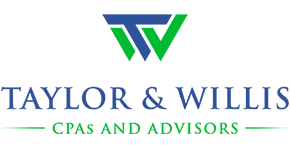Know the $75 Rule for Business Expenses
The $75 rule applies to certain business expenses where you do not need a receipt. But we emphasize that this rule does not apply to all tax deductions.
Many taxpayers mistakenly apply the $75 rule to all their tax deductions, which can result in a significant loss of deductions and penalties. We encourage you to know the $75 rule and its limitations to avoid potential negative consequences.
IRS Reg. Section 1.274-5(c)(2)(iii) contains the $75 rule, and Notice 95-50 provides a clear explanation of what it applies to. The rule applies to business travel expenses, vehicle expenses, and gifts that cost less than $75. But remember that the $25 limit on deductions for business gifts applies, meaning the practical limit is $25.
It’s worth noting that your bank and credit card statements do not provide sufficient proof of expenses for tax purposes. You need to have both the receipt (proof of what you purchased) and the canceled check or credit card statement (proof of payment) to substantiate the expenditure.
While the $75 rule may allow you to avoid having a receipt for some expenses, it is crucial to document all your expenses properly. To document a $60 meal consumed during deductible business travel with or without a receipt, for example, you need to prove the amount spent, the date of the meal, and the name and location of the restaurant.
While you don’t need a receipt for the $60 travel meal, your documentation life is easy with a receipt.
We encourage you to keep all your receipts for tax purposes, as they often take less time to keep track of and are better evidence in the event of an IRS audit.
If I Hire My Kids, Can I Give Them Tax-Free Education Benefits?
If your children work in your business, consider giving them education fringe benefits. Doing this correctly creates:
- tax deductions for the business, and
- tax-free fringe education benefits for the child.
You can accomplish this without a Section 127 plan when your child needs the education to do the job for your business or to comply with a law or regulation.
In general, you can’t treat undergraduate degree programs as work-related education. If you pay for such programs outside of a Section 127 plan, you must treat the payments as taxable income to the child-employee.
But certain individual courses within a program may be evaluated separately, and certain courses, such as accounting courses for an employee-child with an accounting job, may qualify for tax-free working condition fringe benefit payments.
On the other hand, MBA programs can qualify as work-related education if they maintain or improve the employee’s skills for his or her current profession or business.
In addition to the possibilities listed above, if your child is age 21 or older, the Section 127 plan can offer up to $5,250 in tax-free education benefits.
Business Gym for Your Employees, and Maybe You Too
To be tax-deductible, your gym or other athletic facilities must be primarily for the benefit of your employees—other than employees who are officers, shareholders, or other individuals who own a 10 percent or greater interest in the business, or other highly compensated employees.
For the 10 percent ownership test, the law treats employees as owning any interest owned by their brothers and sisters, spouses, ancestors (such as parents and grandparents), and lineal descendants (such as children and grandchildren).
The highly compensated group consists of employees who earned more than $150,000 for the preceding year.
The gym or other athletic facility must benefit the rank-and-file employee group more than the owner and highly compensated employee group. Think of this primary-benefit test as a 51-49 test.
This means that the rank-and-file employees and their families must use the facility on more days than the owner and highly compensated group do.
To see if you pass the 51-49 test, look only at days of use of the facility.
Example. Rank-and-file employees and their families use the gym 235 days during the year and you, the business owner and your family, use it 137 days. The gym passes the 51-49 test. It’s tax-free to the users and deductible to the business as an employee recreational facility.
Take Advantage of the Once-in-a-Lifetime IRA-to-HSA Rollover
Health Savings Accounts (HSAs) are designed for use alongside high-deductible health plans, assisting you in covering your medical expenses. They can also function as an incredible retirement account due to their triple tax benefit:
- You can deduct contributions from your taxes.
- Your account balance grows without being taxed.
- Withdrawals for medical expenses are tax-free.
And after age 65, you can use the monies for non-medical purposes, the same as you can with a traditional IRA, and pay taxes at ordinary income rates but without penalties.
We recommend that you fully fund your HSA each year until you enroll in Medicare and that you ideally minimize distributions. By doing so, even if you start at age 50, you could accumulate $200,000 or more by the time you reach age 65.
To assist in funding your HSA, there is a special, lesser-known rule: you can roll over funds from your IRA to your HSA once in your lifetime through a qualified HSA funding distribution.
The rollover amount is limited to your HSA contribution limit for the year. In 2023, this amounts to $3,850 for individual coverage and $7,750 for family coverage. If you are over age 55, you can add a $1,000 catch-up contribution.
The rollover amount doesn’t count as income, isn’t deductible, and reduces the amount you can contribute to your HSA for the year. The big benefit is that you turn this otherwise taxable money into tax-free money when you use it for medical expenses.











